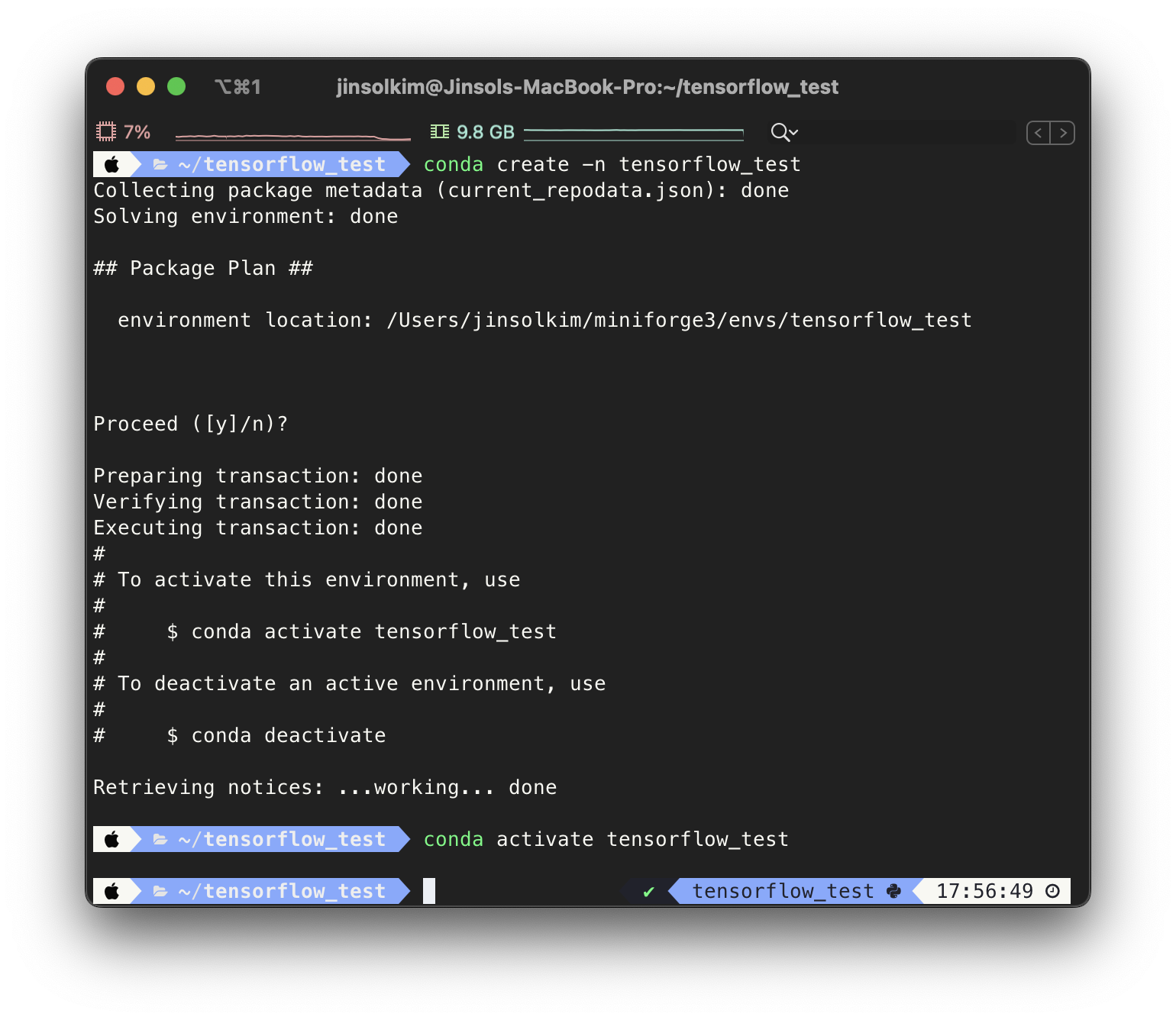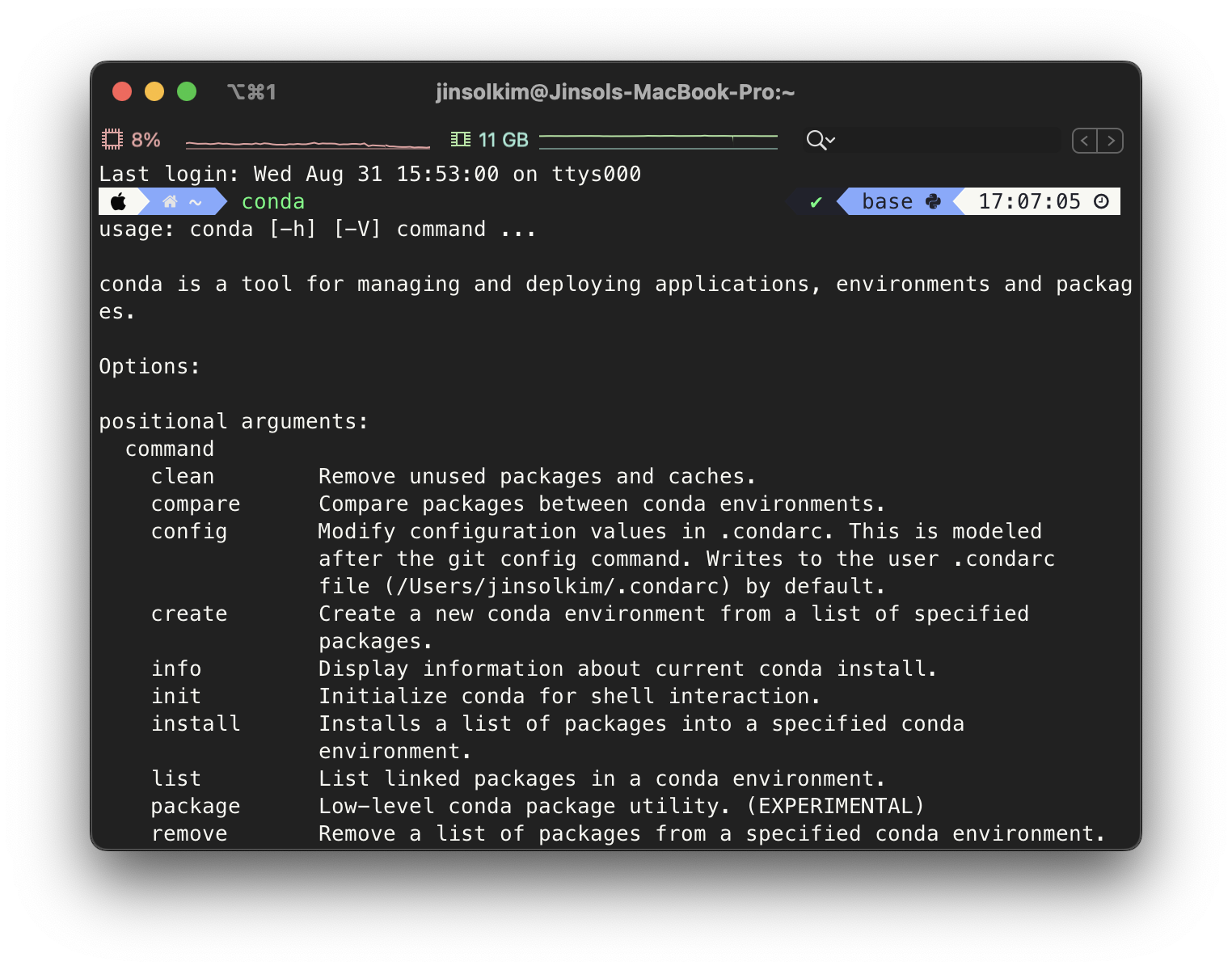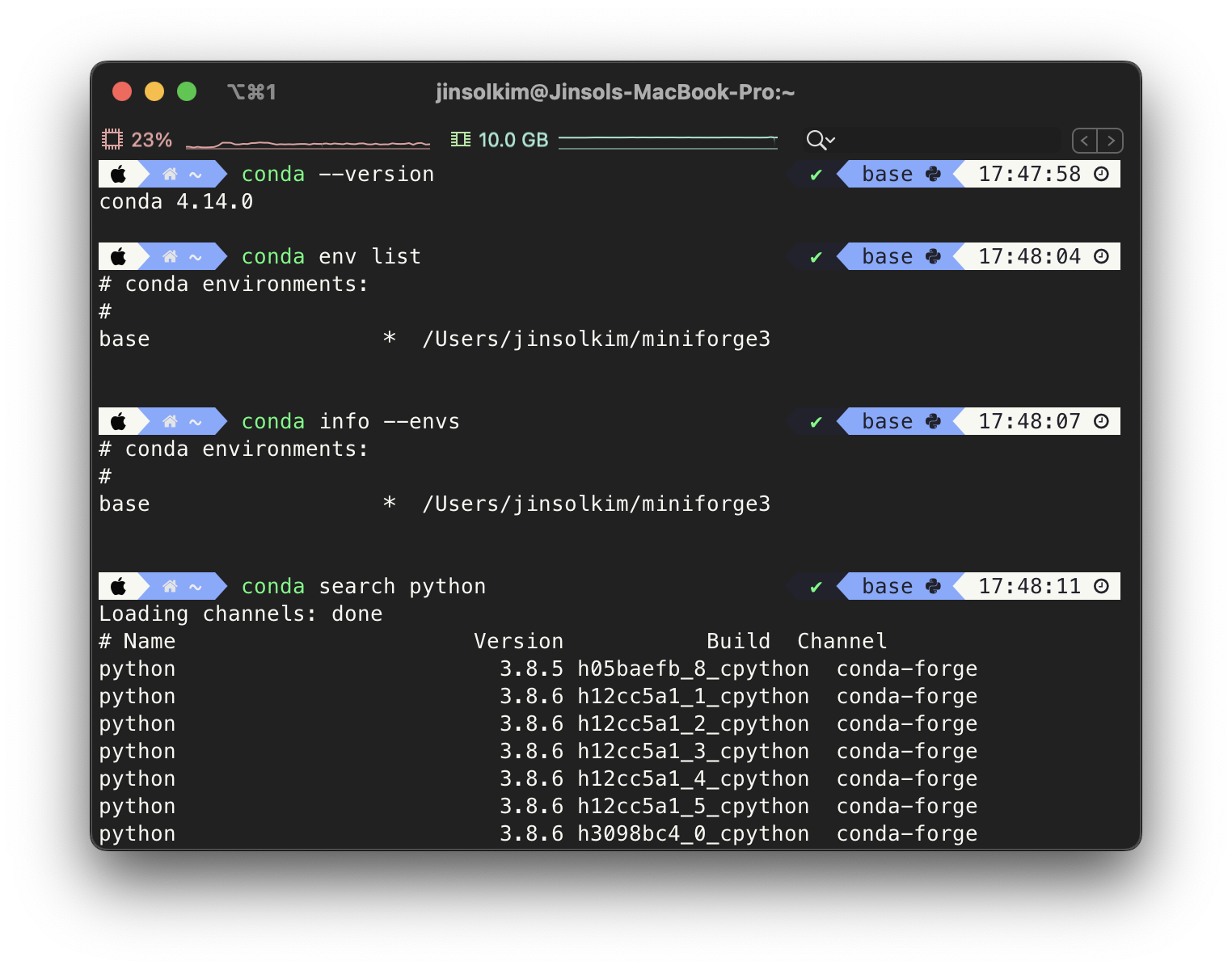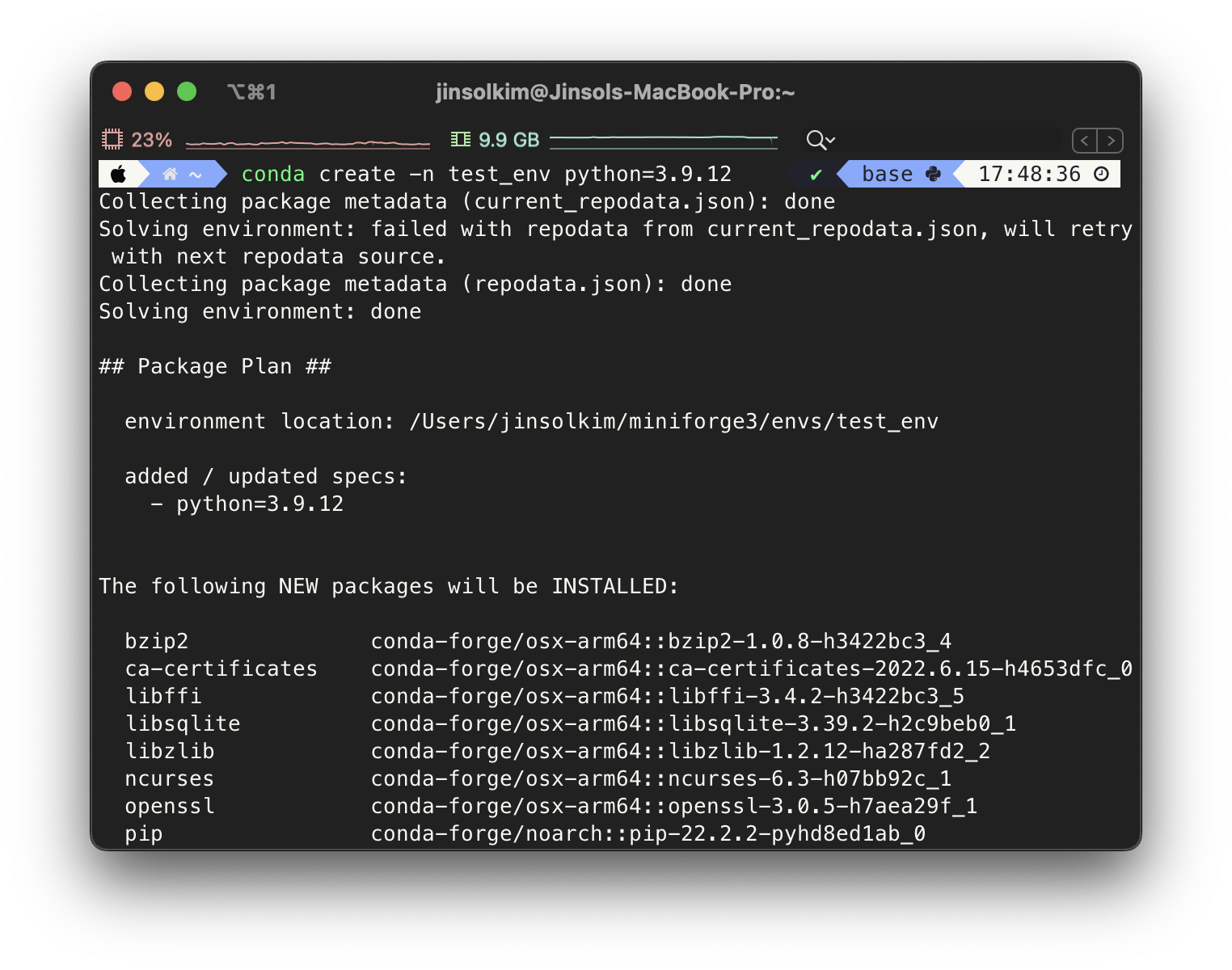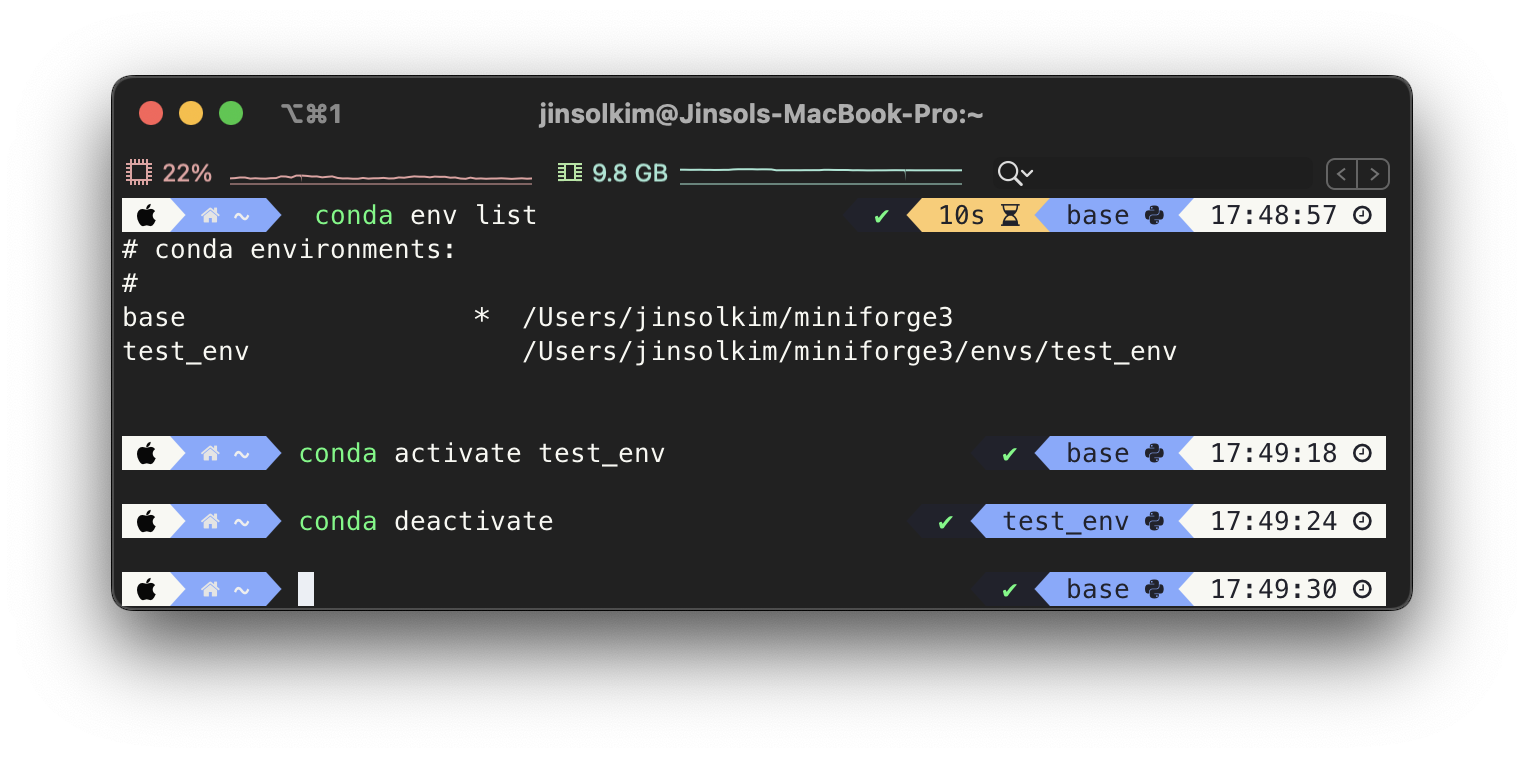[MAC] M1 MacBook Pro Environment setting - #5. Tensorflow
Installing Tensorflow on M1 Mac for Machine Learning
1. Conda를 이용한 가상환경 구축
Step 1) Tensorflow 가상환경을 구축하기 위한 폴더 생성
1
2
mkdir {FOLDER_NAME}
cd {FOLDER_NAME}
Step 2) Conda 가상환경 구축 및 활성화
1
conda create -n {ENV_NAME}
2. Tensorflow depedencies 설치
Apple에서 M1 MacBook에서 Tensorflow를 사용 가능하도록 만든 Tensorflow dependencies를 Apple conda channel를 통해 설치할 수 있도록 제공한다.
1
2
# Tensorflow를 설치할 가상환경 내부에서 진행
conda install -c apple tensorflow-deps
3. Tensorflow-macos 설치
MacOS를 위한 Tensorflow 설치
1
python -m pip install tensorflow-macos
4. Tensorflow-metal 설치
Apple의 tensorflow-metal 은 M1, M1 Pro, M1 Max에서 GPU acceleration을 가능하게 해준다. (Metal은 Apple의 GPU framework)
1
python -m pip install tensorflow-metal
5. (optional) Tensorflow datasets 설치
1
python -m pip install tensorflow-datasets
6. (optional) Data science 패키지 설치
1
conda install jupyter pandas numpy matplotlib scikit-learn
7. Dependencies & GPU acceleration 확인
처음 import 할 때 약간의 시간이 걸린다 (약 1분 정도)
1
2
3
4
5
6
7
8
9
10
11
import numpy as np
import pandas as pd
import sklearn
import tensorflow as tf
import matplotlib.pyplot as plt
# Check for TensorFlow GPU access
print(f"TensorFlow has access to the following devices:\n{tf.config.list_physical_devices()}")
# See TensorFlow version
print(f"TensorFlow version: {tf.__version__}")
위의 코드 실행 결과, 앞으로 Tensorflow를 사용할 때 CPU 뿐만 아니라 GPU도 함께 accelerate된다는 것을 확인했다.
Reference
Setup Apple Silicon Mac for Machine Learning in 13 minutes (TensorFlow edition)
This post is licensed under CC BY 4.0 by the author.
